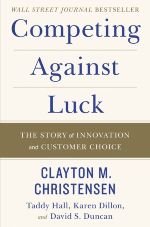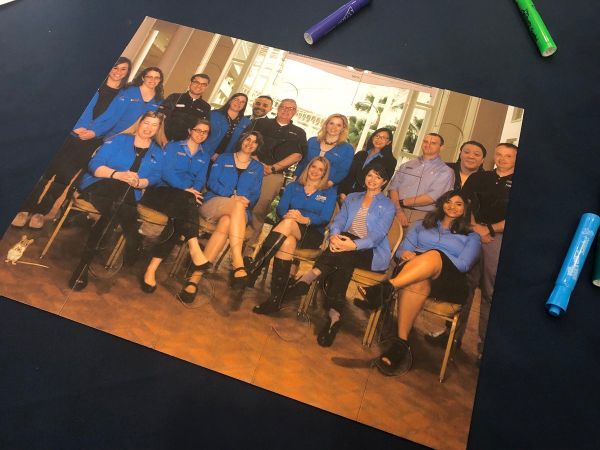
NBOA President and CEO
“People don’t want to buy a quarter-inch drill. They want a quarter-inch hole.” This insight was popularized by Harvard marketing professor Ted Levitt decades ago, but it hasn’t lost its punch. I came across it in the book “Competing Against Luck” by Clayton M. Christensen, which the entire NBOA staff read as part of our annual book club during our staff offsite (more on that below). In fact, our staff book club is one of my favorite professional development activities because it provides a shared learning experience and informs our vocabulary and choices as a staff team – yet it does not require a lot of financial resources. I highly recommend it to you and your staff.

Christensen’s central point is that the most successful organizations focus not on the products they make but rather the problems their consumers have and the “jobs” their products or services perform for those consumers. In terms of independent schools, this might mean focusing not on things like curriculum and tuition pricing — typical outputs — but rather the desire for parents to prepare their children to succeed in 21st-century society.
An example I loved is the story of V8. Initially the manufacturer, Campbell’s, saw the brand competing against other beverages, like soda or juice, Christensen recounts. It was a difficult, saturated market. But Campbell’s executives realized that many customers bought V8 not to quench their thirst, but as an alternative to preparing and cooking vegetables. Competing against vegetables was a much easier proposition.
The company revamped V8’s marketing to show the “job to be done”: images like a busy man peeling and boiling carrots juxtaposed with the same man drinking V8. In less than a year, sales quadrupled. Christensen bemoaned the current state of V8, with its endless variations of V8 Splash and the like that stray from this vision. His point is that organizations would do well to stay laser-focused on the job to be done and not deviate into numerous shiny new product lines that might make a quick buck but will dilute the brand in the long run.
I think of schools and the pressure you face every day to do “the next big thing.” Christensen and I would advise you to not take the bait – and to stay focused.
Christensen also emphasized the importance of process and how critical it is organizational innovation. At the height of Toyota’s success, the company frequently received requests from other carmakers to view its assembly line and learn how they did it. Toyota welcomed everyone, even competitors, because it knew the “secret sauce” was not what anyone could observe in a production plant, but rather the innovative processes behind the scenes.

Think about this in the context of your school. At the core of your school’s financial health are the business processes you follow or the financial discussion you lead with the board of trustees. They are much more foundational to your school’s long-term sustainability than perhaps the size of its endowment.
Understanding the unique characteristics of your students is key to every school’s success.
Another favorite example, and one that I think is particularly relevant to NBOA member schools, is that of Southern New Hampshire University, whose television commercials you may have seen. SNHU reinvented itself upon learning that it wasn’t traditional college-age students that were “hiring” the university, but rather military veterans, late starters, single parents and career changers. This understanding changed everything about who the school was and how it could best perform the job their students hired it to do. Understanding the unique characteristics of your students is key to every school’s success.
At the NBOA staff offsite, which brought together distributed and D.C. headquarters staff for three days at the National Harbor, we asked ourselves a simple question: What are the problems that business officers face, and why would they “hire” NBOA? We had our own thoughts, but if you’d like to answer the question, we’d love to hear!



